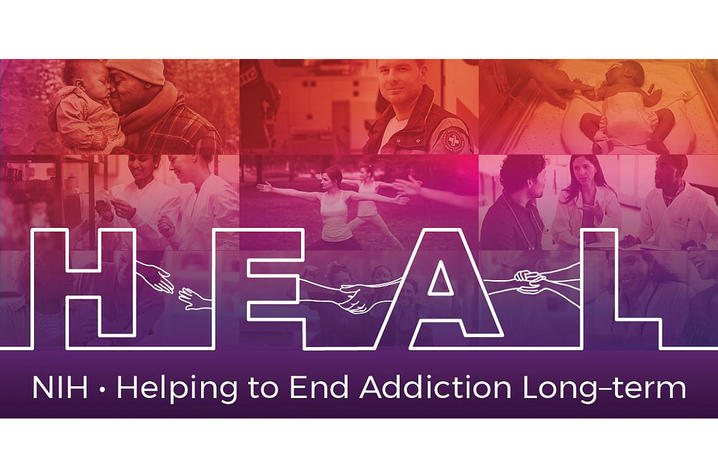HEALing Communities Study intervention impacted by pandemic, fentanyl crisis

LEXINGTON, Ky. (June 17, 2024) — A major research project focused on addressing the opioid crisis in Kentucky and three other states reported its primary results June 16 in the New England Journal of Medicine. The HEALing (Helping to End Addiction Long-term) Communities Study, which included the University of Kentucky as a research site, did not achieve a statistically significant reduction in opioid-related overdose deaths during the evaluation period. Communities implementing the study intervention had an opioid-related overdose death rate that was estimated to be 9% lower between July 2021 and June 2022 compared to control communities.
Launched in 2019, the HEALing Communities Study (HCS) was supported and carried out in partnership between the National Institute of Health’s National Institute on Drug Abuse (NIDA) and the Substance Abuse and Mental Health Services Administration (SAMHSA) through the NIH HEAL Initiative. It was implemented across 67 communities in Kentucky, Massachusetts, New York and Ohio. The study aimed to reduce the overdose death rate in 33 of those communities that were first to implement the “Communities that HEAL” intervention, a process in which communities work with researchers to establish and expand proven practices for preventing overdose deaths.
The paper identifies unforeseen challenges that likely diminished the impact of the intervention, including the COVID-19 pandemic, which began just two months after the start of the study’s intervention. Paired with an increased prevalence of fentanyl in illicit drug markets, the U.S. saw a 30% increase in drug overdose deaths in 2020 and another 15% increase in 2021. Additionally, the study had only a 10-month implementation period before evaluating results, which may have been too short for communities to fully implement and see the effects of their efforts.
Despite the challenges, the study successfully engaged communities to select and implement hundreds of strategies.
“Our findings demonstrate that implementing these evidence-based practices through community-engaged strategies and partnerships can make a meaningful impact on combating overdoses, even amid the rapidly evolving opioid epidemic and unprecedented disruptions like the COVID-19 pandemic,” said UK’s HCS principal investigator Sharon Walsh, Ph.D., a professor in the College of Medicine and College of Pharmacy and director for the Center on Drug and Alcohol Research.
In Kentucky, a team of more than 25 researchers from across UK’s campus led implementation efforts in partnership with community members, state and local leaders, and public and private agencies. In total, Kentucky's eight intervention communities implemented 309 strategies aimed at reducing opioid-related mortality.
The intervention required community coalitions and researchers to work together on three primary evidence-based practices and implement strategies across health care, criminal justice and behavioral health settings: expanded access to overdose prevention education and the overdose-reversal medication naloxone, effective delivery of medication for opioid use disorder and improved prescription opioid safety practices. The intervention also included a series of communication campaigns to reduce stigma and increase awareness of lifesaving resources.
Specific efforts in Kentucky included partnering with 145 organizations to distribute more than 40,000 naloxone units. Strategies to help people find and stay in treatment deployed 26 peer recovery coaches and 16 care navigators and provided $411,848 in transportation support. Other impacts included partnering with 35 pharmacies to install permanent medication disposal drop boxes, which has resulted in the incineration of more than 6,500 pounds of leftover medication. Efforts to reduce stigma and increase awareness of treatment resources produced 64 communication campaigns, resulting in 73 million engagements.
Following the initial intervention period, researchers brought those learned lessons to the 34 control communities, which implemented the “Communities that HEAL” intervention from July 2022 to December 2023. Results from the second set of communities are still being analyzed. Kentucky reported annual reductions in statewide overdose deaths in both 2022 and 2023.
The support and engagement of nearly two dozen Kentucky state government partners including the Kentucky Opioid Response Effort played an essential role in the study's efforts in the Commonwealth.
While the initial HCS analysis showed no statistically significant difference in overdose deaths between the intervention and control communities, researchers are continuing to examine the project’s impact on overall overdose deaths, deaths with specific drug combinations like opioids and stimulants, and nonfatal overdoses. UK’s HCS team also continues to analyze outcomes specific to the Commonwealth, as well as key lessons from implementing the study during the unprecedented challenges of COVID-19 and fentanyl.
“Our goal now is to thoroughly analyze the data and translate the effective strategies into sustainable solutions for the opioid epidemic that can be replicated across Kentucky and the nation,” Walsh said.
Several additional research papers examining areas like the intervention’s impact on reducing stigma and the equity of overdose prevention education and naloxone distribution following its scale-up in the HCS communities have been published, with many other papers expected in the coming months.
Research reported in this publication was supported by the National Institute on Drug Abuse of the National Institutes of Health under Award Numbers UM1DA049406, UM1DA049412, UM1DA049415 and UM1DA049417. The content is solely the responsibility of the authors and does not necessarily represent the official views of the National Institutes of Health.
As the state’s flagship, land-grant institution, the University of Kentucky exists to advance the Commonwealth. We do that by preparing the next generation of leaders — placing students at the heart of everything we do — and transforming the lives of Kentuckians through education, research and creative work, service and health care. We pride ourselves on being a catalyst for breakthroughs and a force for healing, a place where ingenuity unfolds. It's all made possible by our people — visionaries, disruptors and pioneers — who make up 200 academic programs, a $476.5 million research and development enterprise and a world-class medical center, all on one campus.




